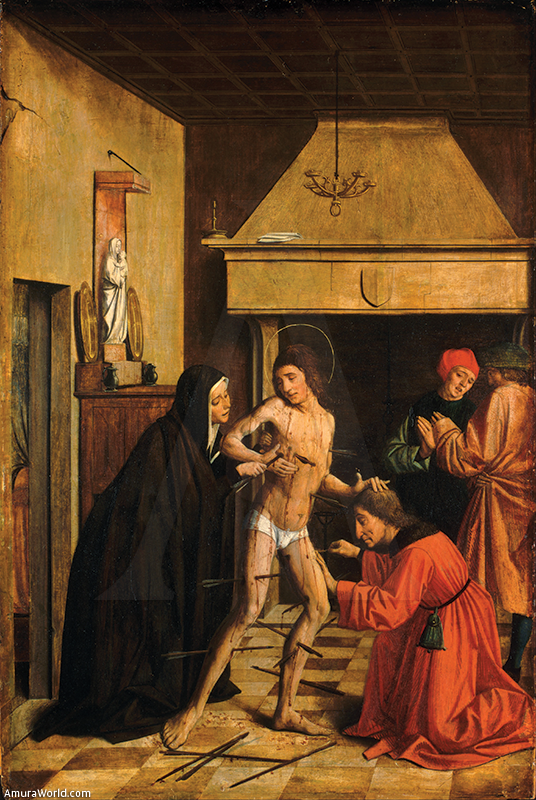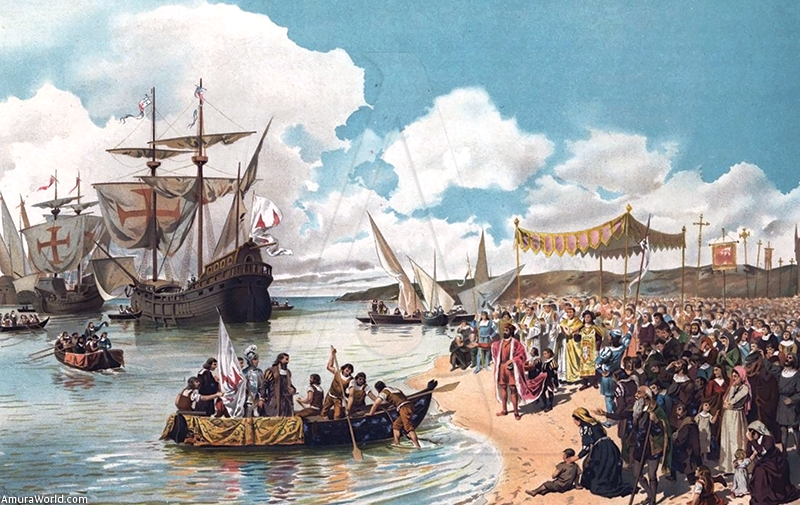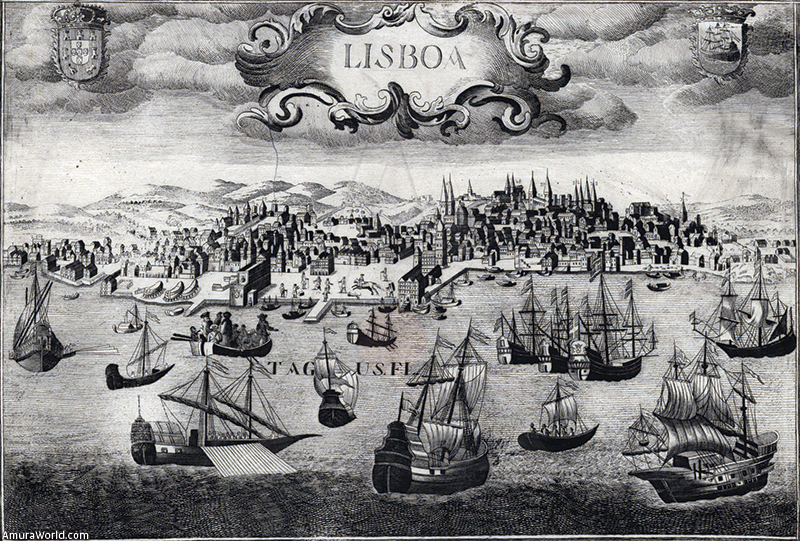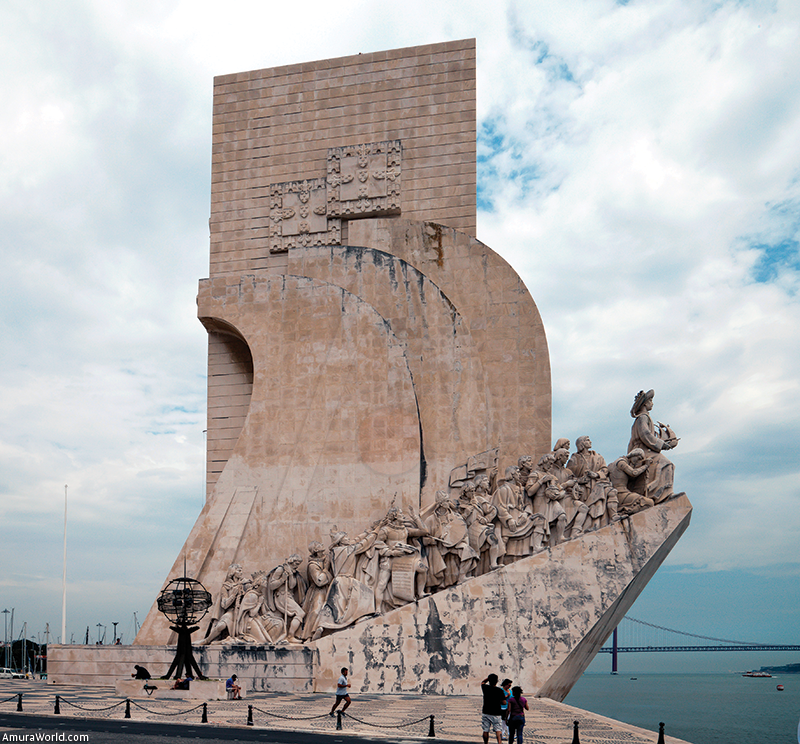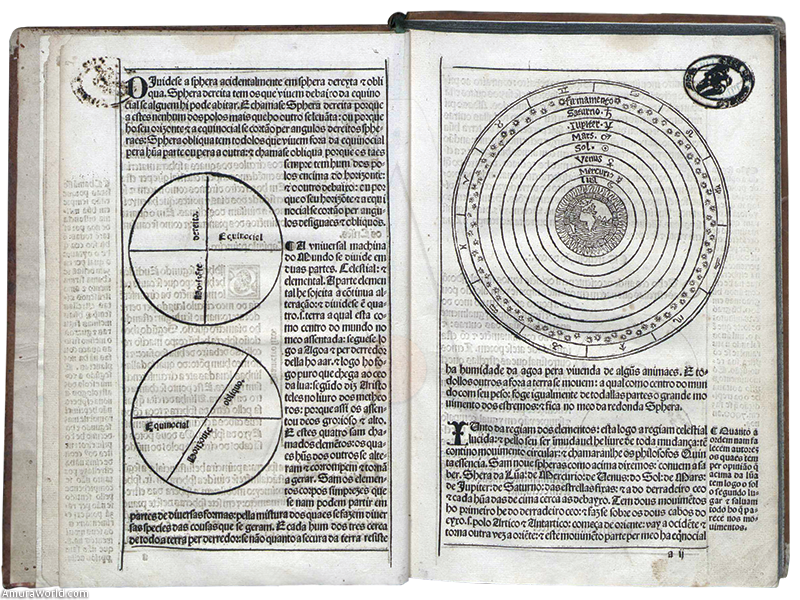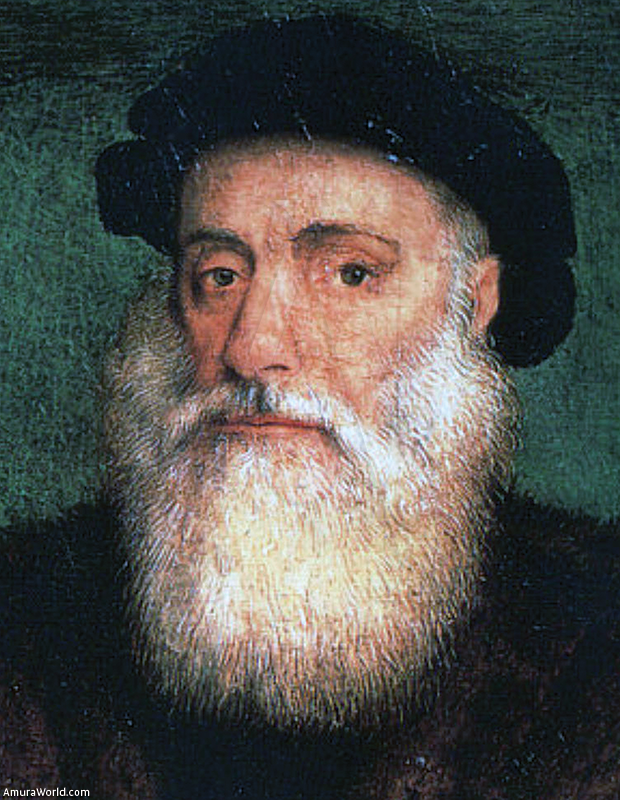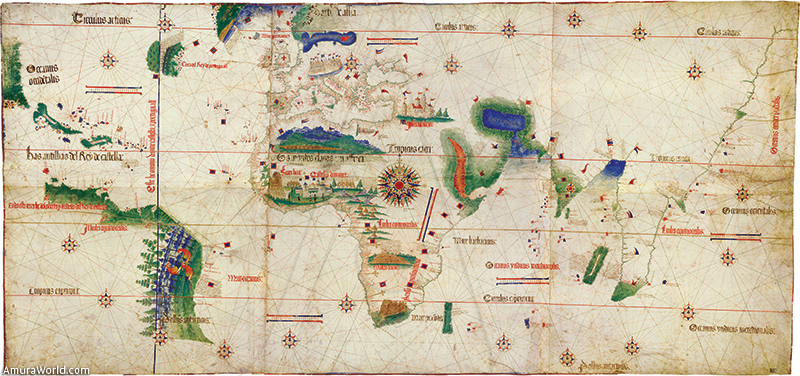Sailing with intuition towards the uncertain paradise
As always, Portugal is spreading its intimate scent to western civilization and its unbelievable history. The Portuguese launched to sea, not without knowing, but without letting anybody know they were doing it, following their intuition on other horizons. It happened when Europe had tried the limits of a life model of practically 1000 years.
A large part of the people in Western Europe suffered from cyclic famine. Evidence suggests that around 1300 the population was larger than the food reserves could sustain. Pandemics of bubonic black plague, cholera, syphilis and typhus were diminishing the defenseless population. These outbreaks provoked people to rebel in Britain, France, Italy and other Countries. When the pandemic was over, the development of civilization took a rough turn.
Medicine, implementation of aqueduct, sewage and hydraulic systems, were all developed to improve the hygiene level of the cities. During the Renaissance period, changes emerged after the outbreaks with the art explosion, research in Astronomy, Politics, Philosophy and Architecture. It was the catharsis between the Middle Ages autumn of profound religiousness and the dawn of a new Era that has not quite defined itself just yet: Modernity.
The “trick” of the world
With progress in every sense of the freshly created Middle Class, it did not hesitate to apply novel techniques to cumulate money and organized large manufacturing, financial and commercial enterprises with their eyes set beyond their frontiers, both, intellectual and Geographical, to become some sort of a branch of divine intelligence that would allow them to understand the “trick” of the world if it set free imagination and free will.
The European expansion reflected the livelihood of the times. The national States supported the travelling for Discovery and the establishment of empires around the globe. A few essential examples of the modern times that were barely announcing their maturity are: the unloading of unbelievable stories at the docks, with new scents and flavors of the spices, the teas from India, the gold of Africa, a metaphor of the eternal and the workforce of human slavery that set the basis of Capitalism in the world.
and finally, the silks from China, threads cultivated by the domesticated worms, and the prehistory of the healthy biotechnology.
They took advantage of the technological inventions: the hydraulic systems, like the water wheel, the windmills in the textile industry, better techniques in the mining industry and the printing press. Especially, the naval construction improved with the compass, the Cartography and other additions like the Astrolabe. It was imperative to measure time, and for this they used the hourglasses to navigate using the ship’s compass.They also added to the naval development the fire arms detonated with gunpowder. Portuguese intelligence gave the best creative and navigators, to give the known world a new dimension.
The Caravels or Naos were of uncertain origin, maybe Arab. However, they were at a time, the most technologically advanced ships, designed specifically for the exploring trips. In fact, they were the first European ships to navigate the Atlantic Ocean. The designs that are most famous and with the highest prestige were those of the Navigation School of Sagres in Portugal.
The main novelties were as follows:
- The Wheel sits over a flat stern
- Combines square with Latin sails, in its 3 or 4 masts
- The body of the ship is elongated and its width is diminished (beam)
- The structure is assembled to better support the load
- It has only one concave deck (Prieto, Ceccarelli, Fortos, Cabrera, González-Palma. Mechanical engineering in the discovery of America)
The five great movements: The Renaissance, the birth of the National States, the overseas expansion of Europe, the birth of the commercial-industrial capitalism and the Reformation, all occurred between the 15th and 16th centuries. Humanity sailed from the end of the middle Ages to the newly born Modernity.
Gutenberg’s printing press produced massive Literature and promoted the use of vernacular or national languages, with the wonders of the bibliographic memories. And part of these memories is art, what the Portuguese navigators captured in paper and the details of the travels in the ship’s log, and in the cartographies, that were interpretations of the ideas created with fantasies between the appropriated realities with applied science.
The new landscapes, the cultures and the ecosystems were visualized in silence. Kings could not appreciate with their senses; they could not perceived the scents or listen to the birds sing. Their skins neither could feel the tropical warmth of the sites, and that is why they depended upon these creators and intellectuals to approach the overseas extension of the Kingdoms they possessed, but could not step on.
What happened in the daily construction of the discoveries with the tools, which were a result of the applied knowledge, became Navigation Technologies and Nautical Engineering. Do not forget that it took months and years, even with the help of Queen Isabel of Spain, to build the caravels for the Admiral Cristopher Columbus. The sails were made of Chinese silk, the nails came from England, the wood came from Africa, and the instruments and cartographies from Portugal. A ship was a summary of the Renaissance and of the multidisciplinary effort of the ancient intelligence.
The roundness of Earth
A new philosophical concept that was hidden from reality finally was brought to light. It was about building the real form of the Planet, making the sphere, the earth globe, but leaving the explanation behind to experience new routes, other places, and other possible seashores.
This energy transformed into the need of success as the new paradigm of the human imaginaries, promoted by the growing commerce with Asia and India that the Venetian controlled, which meant solutions to old problems, new pleasures and desires over a sea of illusions, risks and joys that made history.
The navigation of a Planet dominated by water is the opening for the globalization that even Aristotle and Copernicus had incorporated to the humanity discourse, and which now required a practical verification, in spite of the inquisitive fears instilled for centuries.
The nautical culture of risk in modern age is moved with the symbols of its domestic sky, since they have not lived under other skies that they cannot even begin to imagine.
It is the magic of the sailing space that represents an original and decisive moment within the oceanic exterior, just like today the cyberspace opens. In fact, cybernaut means in Greek: one who survives storms. The meaning that staying in a ship takes when the sailor feels the boat as an extension of his body. The moment in which the sea enters the sensations that the wind and the full sails cause, a relationship emerges between the compact space, that mobile window and the sense of distance. To the point that certain human beings decide to be better inhabitants of the ship, in some kind of unending trip instead of being anchored in some port or city. While others find hope in faraway unknown lands, since they find themselves without a homeland (Peter Sloterdijk, “The Sun and Death”, Ed. Siruela).
Portuguese Intellectuals and the Global Navigation
They inaugurate the Global Navigation. Enrique “The Navigator” (Oporto, 1394 - Vila do Infante, Portugal, 1460), Portuguese prince, installed a research center and nautical education that reunited Geographers, Astronomers, as well as the most outstanding navigators and cartographers of the time. This resulted in a series of fearless trips that culminated in the reaching of the coastline of a new world for Europe, and in opening new routes to the East.
With the arrival of Vasco da Gama to India and the expansion of the Portuguese Empire in that land, a lot of scientists were sent to the East to study medicinal plants and elaborate new drugs. The botanist Tom Pires and the doctors Garcia de Orta y Cristvo da Costa compile and publish works on new plants and local drugs.
Amongst the Treatises on Astronomy, Oceanography and the nautical studies, the main Works include the following:
In that living in a ship that navigates in solitude the seas with their personal and collective histories, carrying, along with their symbols and those found from port to port, a world that has overflown through the oceanic window to finally reach its unity; to discover that the ocean itself unites us all with other paradigms.
In 1492, Martin Behaim, after his schooling in Portugal and at the service of the King of Portugal, built the first known Planet, with Europe and Asia separated by a single ocean; theory that, later on that same year, Christopher Columbus, also schooled in Portugal, was to prove.
Even though it was protected as Secret of State, the cartographic knowledge would finally and under cover be approved by some of those involved in the operation. The Cantino Mapamundi, that was stolen from the Casa da India; the royal Portuguese ministry of all maritime things, for the duke of Ferrara in 1502, or the Dieppe maps, ordered by Henry II of France and Henry VIII of England, that were copies made of the stolen Portuguese maps of those years.
With Carlos Fuentes, we would have to say that Jose Saramago reminded us of the fact that there is, indeed, a great Portuguese Literature. He brought us to our memories that there was the outstanding precedent in Fernando Pessoa, and before him, the extraordinary contribution of Eça de Queiros. However, Jose Saramago escaped, without rejecting it, his purely national condition to join the great global constellation of narrators (Gabriel Garcia Marquez, Nadine Gordimer, Gunter Grass, and Juan Goytisolo, amongst others) that constitute today the narrative of the globalization of the entirety.
Text: Jesús Peraza Menéndez} ± Photo: WPD / BP / WPS / WKP / edc



